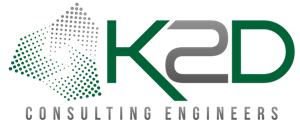
Title 24 compliance can be achieved using either of two different methods – prescriptive or performance.
The Prescriptive Method evaluates each aspect of the building for compliance with minimum requirements. While this method may seem the simplest, it has little flexibility and typically leads to higher long-term costs because it fails to maximize the synergies of energy efficiency across all energy sources and expenditures.
The Performance Method is more complicated, but the most accurate. It assesses the energy consumption of the entire building. This is the method most often recommended to save on construction costs. Superior energy efficiency for one part of the building (or system) can be applied to other building functions that have less of an efficiency payback. The flexibility is used to achieve both lower construction costs and better total energy savings.
For instance, LED lighting with sensor controls typically nets the highest rate of return in terms of both energy and dollars saved. A superior LED lighting system can be more complex at the outset, but the energy credits received can be applied to more costly upgrades that would be mandatory under the prescriptive method. You might also compound the savings with less maintenance by simplifying other systems that would otherwise be more complex under the prescriptive method.
Summary of Coming Changes to Title 24 Compliance
The California Energy Commission updates the Energy Code every three years. On August 11, 2021, the new 2022 Energy Code was adopted. Buildings whose permit applications are applied for on or after January 1, 2023, must comply with the 2022 Energy Code.
The 2022 Energy Code encourages efficient electric heat pumps, expands solar photovoltaic and battery storage standards, establishes electric-ready requirements for new homes, strengthens ventilation standards, and more.
- Most new buildings and homes will need to be equipped with at least one highly efficient heat pump for either space or water heating. (heat pumps use 50 to 70 percent less energy compared with other technologies.)
- Establishes combined solar PV and battery standards for select businesses. Systems are sized to maximize onsite use of solar energy and avoid electricity demand during times when the grid must use gas-powered plants.
- Strengthens ventilation standards to improve indoor air quality.
- Improves efficiency standards for building envelope, various internal systems, and grid integration equipment, such as demand-responsive controls to buoy grid stability.
- Strong incentives for all-electric new construction.
- Establishes new efficiency standards for commercial greenhouses (primarily cannabis growing).
These requirements vary between business and home buildings, as well as among climate zones in which they are implemented. The energy code applies to new construction and renovations to existing buildings.
K2D is here to help us build a greener tomorrow, today.
At the core of K2D are:
- MEP Services
- Title 24 Compliance & Energy Analysis
- Commissioning Services
- Facilities System Design
- LEED Certification
- Electrical design
- Heating, A/C & Ventilation Design
- Solar Design
- Plumbing Design
K2D provides specific solutions to your project challenges. Our MEP consultants are highly trained and experienced. We work closely with architects and owners to provide successful coordination of building systems. K2D provides the best design solutions that are cost-effective today and well into the future. Today’s facilities must be built to last many decades with the foresight to ensure a maximum lifecycle. For further information or to schedule a consultation please contact K2D at 310.935.3773 or visit www.K2D.com to learn more.
